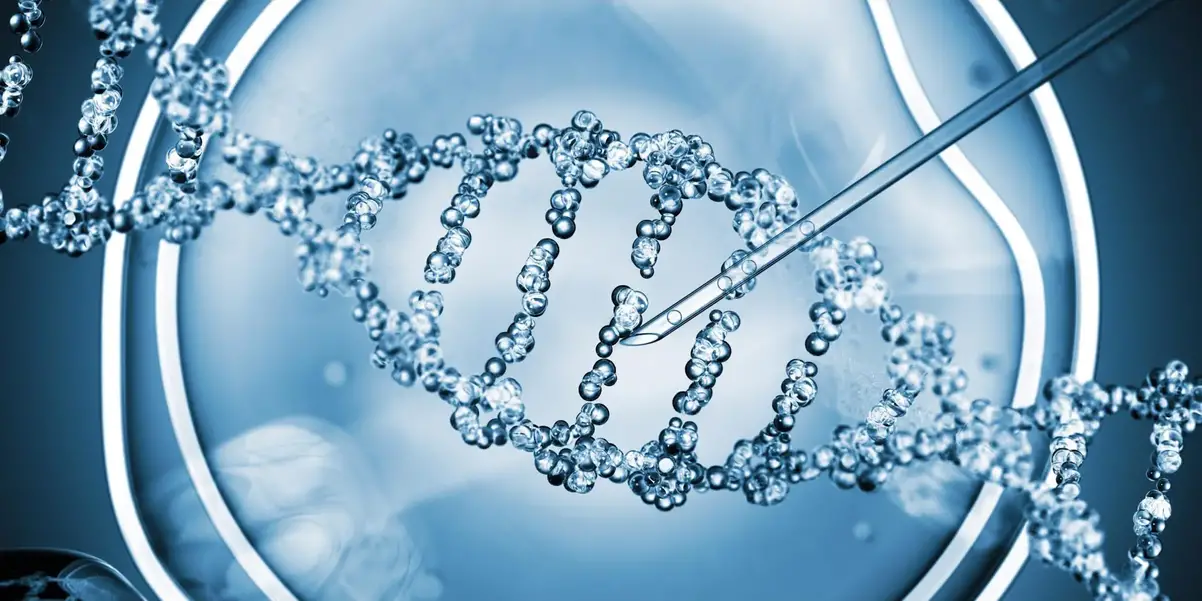Harward researchers created a new model that can use to manipulate single base pairs in DNA. Researchers can use that kind of thing to fix genetic disorders. And the same thing can use to manipulate bacteria genomes. If we want to fix genetic disorders we must have extremely high accuracy in that process, and for successful gene therapy, the diagnosis must be made early enough.
Fixing genetic errors is easiest to make during the morula period or if the genetic disorder is seen before fertilization that process is even easier. The new scanning laser microscopes and other kinds of tools can uncover non-wanted DNA sequences. And then the system can replace them with more suitable DNA sequences. Theoretically, that thing is very easy to make.
But in practice, deep knowledge of DNA structure is necessary. Researchers require that information to find certain base pairs' functions. And that thig is a requirement for making that genome therapy successful. The system must locate the error and then cut that sequence away. Then the system must replace that removed DNA sequence by using a new and error-free sequence.
"The two DNA strands are known as polynucleotides as they are composed of simpler monomeric units called nucleotides. Each nucleotide is composed of one of four nitrogen-containing nucleobases (cytosine [C], guanine [G], adenine [A], or thymine [T]), a sugar called deoxyribose, and a phosphate group. (Wikipedia/DNA)
AI can be used to map genomes more effectively than ever before. And that thing is one of the most powerful tools in modern laboratories. Mapping the base pairs can happen by using the microscope- laser-spectroscopy that detects the types of bases in certain points. And then, that system will compare those results with the wealthy DNA. There are four types of bases in the DNA. And spectrometers can separate those bases from each other.
And that thing requires CRISPR. The thing that the researchers need is a wealthy human. Then they must make the genetic map. Or map the order of the base pairs. Then the system must systematically test what kind of genomes people with certain hereditary disease has. There are two ways in which those genome errors can affect.
"Researchers have developed a groundbreaking “mini gene” that holds promise as a gene therapy for Usher Syndrome type 1F. The new therapy has been tested on mice and has been shown to increase the production of a crucial protein that is responsible for the deafness and progressive vision loss associated with Usher 1F. This research marks a significant step towards the development of a treatment for Usher 1F blindness, which currently has no cure". (ScitechDaily.com/Harvard Researchers Design “Mini Gene” Therapy for Severe Genetic Disease)
"Researchers at UC Santa Barbara have developed a method to significantly enhance the efficiency of CRISPR/Cas9 gene editing without using viral material for the delivery of the genetic template. The method, as outlined in a paper published in Nature Biotechnology, employs interstrand crosslinks to stimulate homology-directed repair, a step in the gene editing process, increasing the efficiency threefold without raising mutation frequencies. These crosslinks, usually used in cancer chemotherapy, were found to boost the cell’s natural repair mechanisms and improve the likelihood of successful gene editing". (ScitechDaily.com/Gene Editing Gets a Triple Boost: “Happy Accident” Leads to Enhanced CRISPR Efficiency)
1) They can affect straight to some biochemical processes in the human body.
2) Or genetic diseases can have indirect effects. That means that some viruses can infect those people easily etc.
The problem is that the researchers must find if some diseases are hereditary, or does it have an environmental background. The thing is that environmental effects like nutrients have a crucial role in hereditary diseases. Confirming the DNA error makes it possible to locate the right position in the DNA. Then the system must have an error-free DNA sequence that it injects to that point.
But first, the system must remove the damaged DNA bite. The DNA can transfer from another person. Or it can be made by using nanotechnology. Nanotechnology makes it possible to create synthetic DNA. But if that DNA wanted to use for fixing genetic disorders, those researchers must make the purity check. The "purity check" means that there are no errors in the DNA that will replace the damaged DNA.
https://scitechdaily.com/gene-editing-gets-a-triple-boost-happy-accident-leads-to-enhanced-crispr-efficiency/
https://scitechdaily.com/harvard-researchers-design-mini-gene-therapy-for-severe-genetic-disease/
https://en.wikipedia.org/wiki/DNA





No comments:
Post a Comment
Note: Only a member of this blog may post a comment.